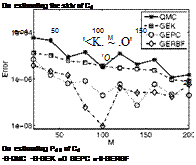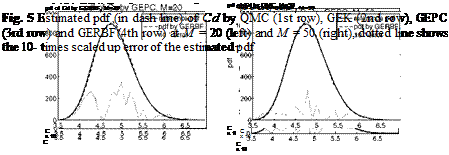Semi-infinite Formulations
The semi-infinite reformulation aims at optimizing the average objective function but maintaining the feasibility with respect to the constraints everywhere. Thus, it aims at an average optimal and always feasible robust solution. The ideal formulation is of the form
min f(y, p, s(Z))dP (Z) (23)
y, p
n
s. t. c(y, p,s(Z))= 0, yz є n (24)
h(y, p,s(Z)) > 0, yZ є П (25)
This definition of robustness can also be found in Ref.[21] and in Ref.[30] . Semiinfinite optimization problems have been treated directly so far only for rather small and weakly nonlinear problems, e. g. Ref.[10]. For the numerical treatment of complicated design tasks, one has to approximate the integral in the objective (23). Considering scalar-valued uncertainties, we assume a truncated normal distribution, that means in the multivariate case з ~ шпН(у, С) • Ід, R C with expected value
1, if x є R
vector v, Covariance C and indicator function 1R(x) = .
0, if хЄ R
The integral in (23) can be efficiently evaluated by a Gaussian quadrature for small stochastic dimensions, where the quadrature points {з;}^=1 are the roots of a polynomial belonging to a class of orthogonal polynomials. Due to the exponential growth of the effort with increasing dimension, the full tensor product Gaussian quadrature rule should be replaced in the higher dimensional case by Smolyak type
algorithms which use a recursive contribution of lower-order tensor products to estimate the integral We will discuss this method in the next section. Therefore, we can reformulate problem (23-25) in an approximate fashion in the form of a multiple set-point problem for the set-points {s^N^:
N
min У f(yt, p, si)Oi (26)
Уі, Р =1
s. t. c(yi, p,Si) = 0, Vie{1,…,N} (27)
h(yi, p, Si) > 0, Vi e{1,…,N}. (28)
where <oi denote the quadrature weights. We will investigate this formulation later on.















